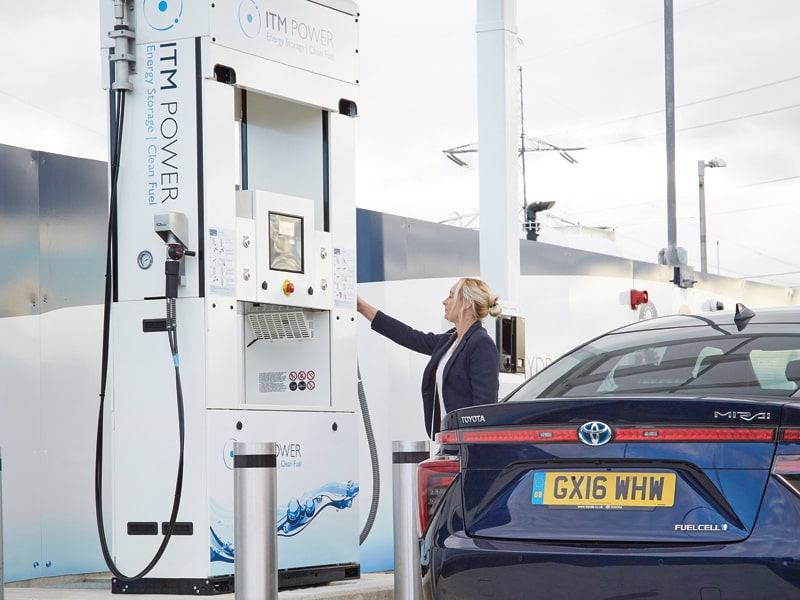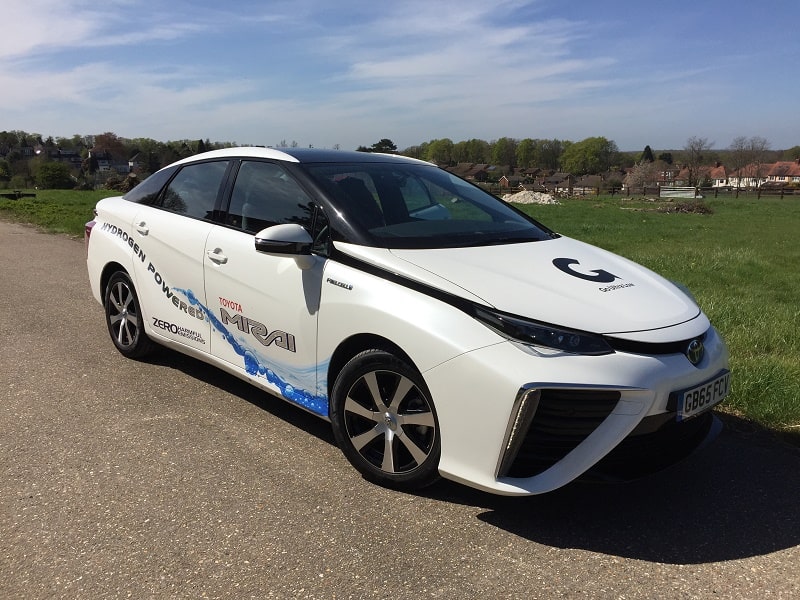
Hydrogen is destined to be one of the fuels of the future, a possible substitute for gasoline or diesel, and an alternative to plug-in electric cars. Although only one model, the Hyundai Nexo, can currently be registered in Spain, and although the number of possible refuelling points can be counted on the fingers of one hand, in Europe and Asia this technology is gaining more and more weight.
Moreover, there is no denying the doubts that this fuel generates, both for its profitability and its safety in everyday use. That’s why Javier Brey, president of the Spanish Hydrogen Association, resolves many of the myths surrounding this chemical element as fuel for cars in the immediate future.
Firstly, the profitability of hydrogen is often questioned due to its “possible” high production costs, questioning whether it is feasible to assume it at present. According to Javier Brey, the cost of producing hydrogen depends on the method used.
“Traditionally, it has been produced by reforming natural gas with water vapour. In this case, the cost depends directly on the cost of natural gas, to which must be added the amortization of the investment costs in the reformer himself.
However, if the hydrogen is obtained by electrolysis of the water, Brey assures that “the cost will be directly proportional to that of the electricity used in the process.
With renewable electricity at 2.5 cents per kWh (prices that already exist in Asia or MENA, and are already being reached in Europe or America) the hydrogen produced by electrolysis is competitive with that produced by reforming natural gas steam and, of course, becomes a viable alternative fuel,” he says.
In the case of using excess renewable electricity, the production costs of this hydrogen would be minimal, since “it is an energy that would be lost if it were not stored in the form of hydrogen. On the other hand, investment costs in electrolysers have been so drastically reduced in recent years that they are already competitive with those of natural gas reformers, and, in many cases, are even much lower.
How hydrogen is obtained
As for the production of hydrogen for use as an alternative fuel, there are currently multiple methods, among which Brey explains which are the most developed:
A first method is called “Natural Gas Steam Reforming”. This process “combines methane (the main component of natural gas) with water vapour to produce carbon dioxide (CO2) and hydrogen through an endothermic chemical reaction (requires providing heat to the process). It has been the traditional method, and the one that has been used the most to produce the hydrogen that industry has been demanding”.
A second method is the electrolysis of water. Thus, using electricity, the water molecule is dissociated into its components (hydrogen and oxygen). Known for decades, “it resurfaces strongly now due to the improvement in electrolysis and the reduction in the price of renewable electrical energy that we have had in recent years”, according to the president of the Spanish Hydrogen Association.
Burning natural gas (combining it with oxygen in combustion proportions) would not produce hydrogen, but carbon dioxide and water (and thermal energy, or heat, obviously), which are the only products of the complete combustion of any hydrocarbon.

Where does the energy for electrolysis come from?
Once the methods of obtaining hydrogen are known, the next question that arises is where the energy needed for the production of electrolysis comes from, so that the whole process is as efficient as possible.
According to Brey, the goal is to produce hydrogen by electrolysis using electricity from renewable sources. In this way hydrogen would be free of emissions not only during its use, but also during its production.
The efficiency of the electrolysis process exceeds 80%. This means that for every kWh of electricity used we will obtain at least 0.8 kWh in the form of hydrogen (higher calorific value).
Each kWh is equivalent to 3.6 MJ and the superior calorific value of hydrogen is 141.86 MJ/kg. “Doing some simple calculations we see that with 1 MWh it would be possible to produce more than 20 kg of hydrogen (equivalent to about 2500 km of autonomy in a fuel cell vehicle)”.
For those who doubt whether hydrogen production is polluting, the answer is that it will depend on the method used for production.
Thus, Javier Brey explains that “currently, hydrogen is obtained mainly by reforming natural gas with water vapor, a process that emits CO2 (if this process uses biogas, net emissions of carbon dioxide would be zero). But this production has been the traditional one, aimed at the industrial sector that consumed hydrogen”.
As renewable energies are implemented, the availability of cheap renewable electricity increases. And so, “if hydrogen is obtained by electrolysis of water and the electricity used in this process is of 100% renewable origin, hydrogen will be free of polluting emissions, not only in its use but also in its generation”.
On the other hand, fuel cells are electrochemical devices, not thermal machines, and therefore their performance is not limited by the Carnot limit.
A fuel cell is an electrochemical device that directly transforms the chemical energy of a fuel into electricity efficiently, quietly and reliably; it also produces heat and water.
The fuel cell does not run by combustion, but by electrochemistry, so it achieves higher efficiencies than internal combustion engines. They have no moving parts so they do not generate noise or vibrations and their maintenance is simpler. In addition, they do not generate polluting emissions, nor greenhouse gases; only water.
Danger, explosive gas!
Another major doubt about the use of hydrogen as a fuel is its ability to explode and burn. the Hindenburg blimp, destroyed by a fire when it landed in New Jersey on May 6, 1937, is mentioned as an example on numerous occasions.
Well, like any other fuel, for an explosion or combustion to occur, an oxidizer (oxygen) and an energy source for ignition are required. The deposits that store the hydrogen in the car have great security measures and inside they house hydrogen in 99.99% purity.
In addition, it should be borne in mind that hydrogen is a very volatile gas, which, in the event of a small leak, would dissipate quickly not reaching the concentrations needed to give explosive conditions.
In enclosed spaces, such as garages, basic ventilation would be sufficient to ensure safety. In addition, hydrogen is non-toxic, so breathing a certain amount mixed in the air poses no health risks, and its impact on the environment is low.
Javier Brey also explains that for more than a hundred years “hydrogen has been produced, transported and used for commercial and industrial purposes with an exemplary safety record”.
The applications of hydrogen as an energy vector already have norms and standards, as for other fuels, which have been developed and implemented to ensure safe transport and use.
In this regard, it should be noted that the aerospace industry uses hydrogen as a fuel without major incidents, and that hydrogen cars, which are already available on the market, have specific safety systems, have passed all the required tests and are as safe as any other vehicle on the market.
In this regard, it is worth noting that the Hyundai Nexo (fuel cell electric vehicle) has obtained the maximum score of five stars in the Euro NCAP safety tests, thus becoming the safest SUV on the market.
In short, hydrogen is a fuel that, like any other, handled with the proper rules and safety measures, is completely safe.
But what could happen in case of an accident? Being a flammable gas, it is more or less dangerous than if a gasoline car catches fire?






